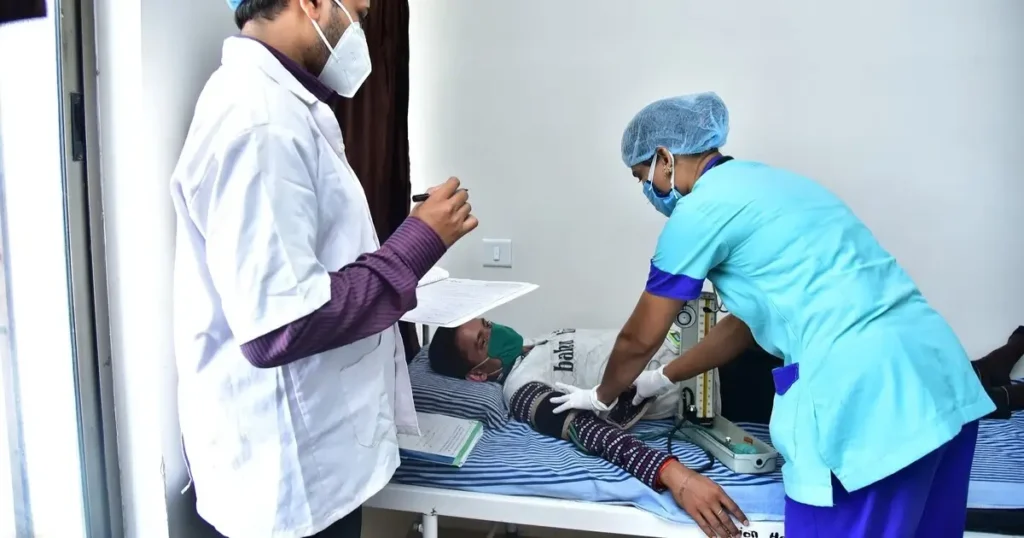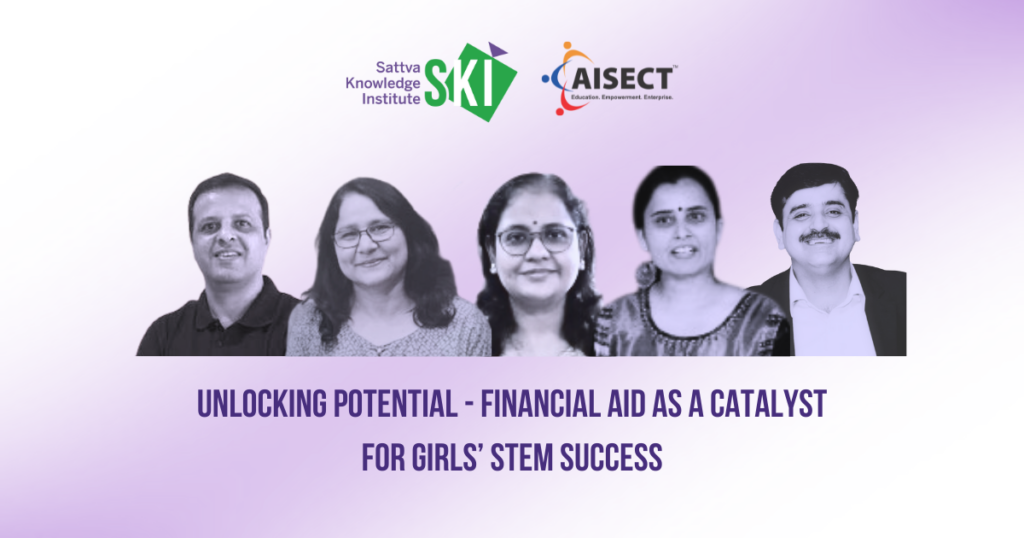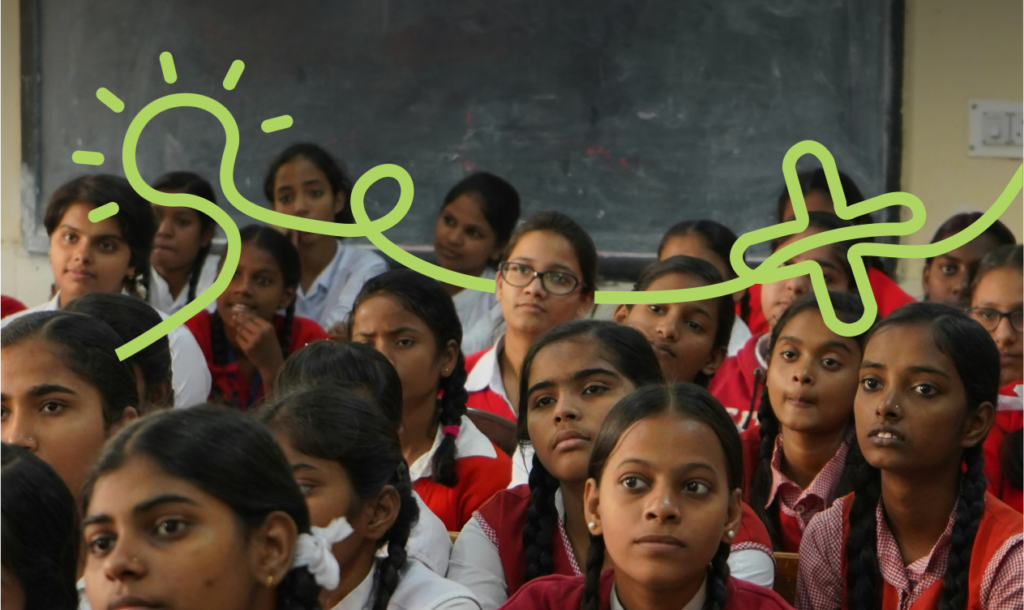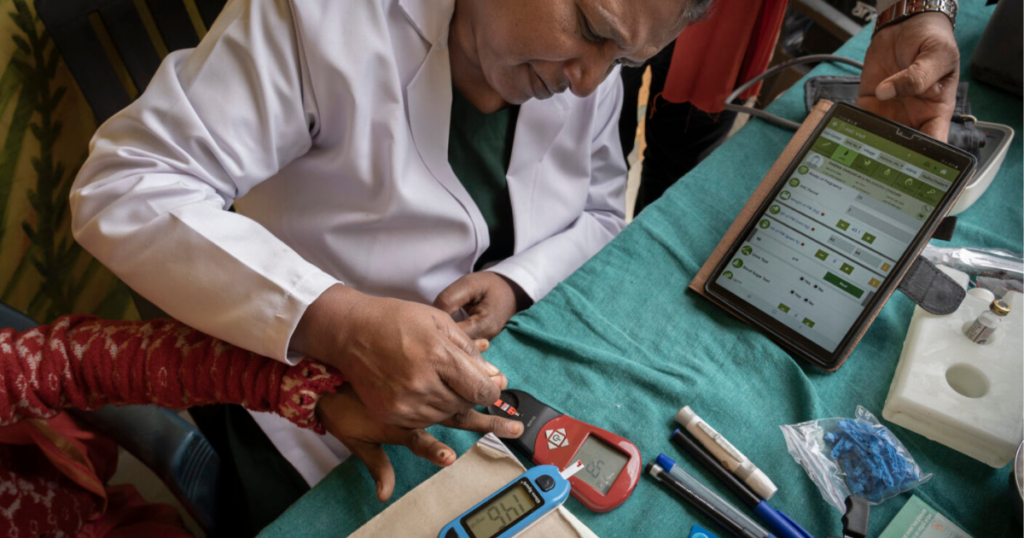Rapid growth of the healthcare sector has increased the demand for health professionals.
In India, the market size of the healthcare industry has more than doubled in the last five years. This change is being driven primarily by five factors:
- Expansion of healthcare infrastructure to Tier II and Tier III cities and rural areas
- Shift from curative to preventive care
- Rising geriatric population with about 300 million senior citizens expected by 2050
- Changing lifestyles and dietary patterns
- Rise of the health-tech ecosystem with 45% increase in total investment in health tech startups.
This has led to an urgent need to strengthen the healthcare infrastructure to meet increased demand, and invest in skilling health professionals at all tiers of service delivery.
The industry faces a large talent gap in supply and demand, mandating the need to strengthen this cadre of health professionals.
Allied Health Professionals constitute the majority of the healthcare workforce in the country (Health Sector Skill Council, n.d., Occupational Mapping Report: Allied Health and Paramedic Sector). AHPs play an important role across the healthcare value chain, providing healthcare or supportive services pertaining to diagnostics, treatment, counselling, diet, and rehabilitation. Interactions with industry players indicate that there has been more than a 30% increase in the requirement for para-medical, patient attendants and other such AHPs as a result of the pandemic. However, there exists a large talent gap with demand being six times the current supply of AHPs (BCG & GAPIO 2020). Additionally, the existing infrastructure can only supply 4% of the demand for AHPs, leading to a deficit of 6.2 million professionals across the country. Even the existing supply of AHPs is unevenly distributed across geographies, inadequately trained, and lacks female participation. There is wide variation in the distribution of AHPs across states. Despite housing a majority of India’s population, rural areas severely lack access to health professionals, compared to urban areas. Women are also underrepresented in allied health roles. Nearly half of the already scarce AHP workforce is also under-trained and under-qualified.
To effectively solve the challenge of the gap in skilled talent, it is imperative to design
specific interventions for diverse job roles and skill levels.
The cadre of allied health workers is highly diverse with different levels of skills needed for varying occupations. The current discourse around the allied health workforce needs to shift from collective challenges faced by the occupational group, and evolve in response to the variety of job roles and their specific challenges. Three major categories are a) high-skill technical occupations which are highly aspirational but lack awareness and dedicated financing for high training fees b) low or semi-skilled technical occupations which carry the potential to generate mass employment but are mostly in the informal sector and have low pay and poor working conditions c) existing workforce where the challenge is primarily around lack of inclusion, recognition into the formal economy and up-skilling opportunities.
Bridging the talent gap in the allied health ecosystem will require systematic efforts from multiple stakeholders and can be focused on these four cornerstones:
- Policy interventions aimed at defining allied healthcare, easing regulations, incentivising private action and implementing policies robustly. The implementation of the recent National Commission for Allied and Healthcare Professions Act 2021 (NCAHP) needs to be expedited with a clear definition of the roles of different stakeholders in the allied health ecosystem. The state also needs to recognise the existing workforce and other diverse roles in the cadre of allied health providers, to ensure absorption in the formal economy. Additionally, easing private sector collaboration through more streamlining of centre-state policies and flexibility of regulations will be beneficial.
- Infrastructure interventions focused on investment in both physical and digital asset creation and management, with a special emphasis in rural areas. Strengthening the capacity of training centres and upgrading medical colleges with AHP facilities is a key area of action. Digital infrastructure interventions using platform technology to bring telemedicine to remote areas should also be explored.
- Knowledge and data interventions to improve the collection and dissemination of data on existing supply, demand and gaps to ensure well-targeted action by all stakeholders involved – targeted policies and funding interventions. It is also critical to disseminate knowledge on varied AHP roles and demystify the occupations to increase awareness and attract talent.
- Finance interventions like dedicated and innovative financing tools to ensure accessibility to aspirations courses for low-income families along with strategies like clustered training centres to reduce capital expenditure.
Strategic and targeted financing of these interventions by philanthropic institutions is critical for achieving the winning aspiration of universal healthcare coverage and sustainable employment.
Given the systematic shifts required to bridge the talent gap, philanthropy has a critical role to play in catalysing action toward the four cornerstones. Philanthropic institutions can play a role in mobilising funds to finance students, strengthen infrastructure and address some of the key gaps in data and knowledge by funding research and technology solutions.
Additionally, they could promote collective action through policy advocacy and strengthen the central discourse on the need to invest in the skilled allied health workforce.
Authors: Harsha Sanyukta and Prerit Shukla, with support from Prabhleen Kaur




